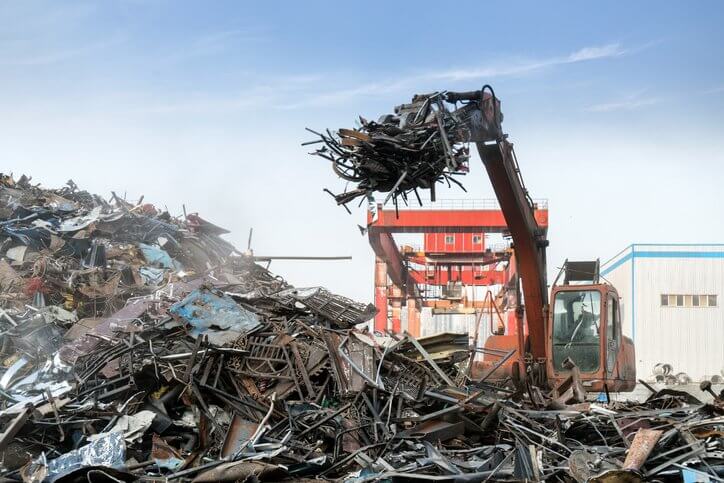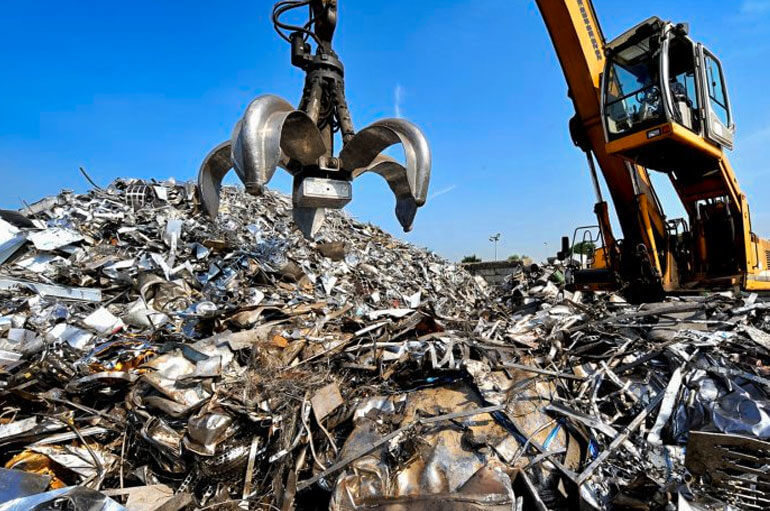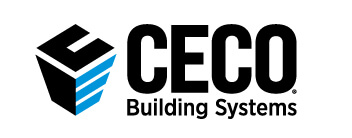Sustainability: The Ceco System and the Ecosystem
Posted on June 10, 2021 by Ceco Building SystemsSustainability: The Ceco System and the Ecosystem
Ceco understands that sustainability is a crucial part of the construction industry’s future. Learning to build in and with the environment is quickly becoming the only way forward. Clients, governments, diminishing resources and basic responsibility demand it. But it doesn’t have to be difficult – and design, aesthetics and budgets don’t have to be sacrificed to accomplish it.
In fact, Ceco products, construction practices and delivery methods are designed to help you maximize the environmental performance of your building by conserving natural resources and reducing waste – and can even help you earn valuable certification with LEED and Energy Star.
Today, we’ll highlight two embodiments of sustainable construction, and explore an in-depth analysis of the complex realities of metal products’ impact on the environment. Though these projects didn’t use Ceco products specifically, they used components standard to the metal industry.
It Takes Two
Located in Washington, D.C. and named for its neighborhood native son, The Marvin Gaye Recreation Center was designed by Rick Schneider, FAIA, and ISTUDIO Architects. Sustainable construction was top of mind throughout the Recreation Center’s design process:
“Our approach is to understand the cycles of nature, and to emulate them in design, said Schneider. “We avoid fighting powerful forces like the sun, wind and rain and instead we want to harness these powerful forces to create healthier buildings and improve our ecosystem.”
To that end, metal products were used inside and out, top-to-bottom, including steel framing, metal panels and a perforated exterior aluminum screen, as well as steel stairs, rails and decorative elements. Steel panel cladding is an integral part of a system that helps control solar gain.
Since it is situated on a 100-year floodplain, the center is elevated off the ground with accessible walkways and includes a cantilevered second floor, providing both a tree-top balcony and a shady refuge underneath. “When we design for sustainability, it looks a lot like design for resilience,” said Schneider. Daylighting defines the architecture, with ample light flooding in through large windows – reducing the need for artificial lighting.
Another surprising environmentally conscious feature is that the building “breathes.” When outdoor temperature and humidity allow, a green indicator lights up inside, signaling occupants to open the windows. Upon opening the windows, the air conditioning system automatically goes into passive mode, and the solar-powered roof exhaust fans kick on, pulling cool outdoor air in through the windows, and pushing warm, stale air up and out. Of course, this process is naturally assisted by the fact that warm air rises.
The Marvin Gaye Recreation Center is the first public facility in Washington, D.C. with integrated natural ventilation, was the city’s first resilient hub case study for the Urban Sustainability Directors Network and has won many awards.
As you can see, products like Ceco’s not only fit seamlessly and elegantly into environmentally friendly projects, they make many of their innovative sustainable features both possible and long-lasting.
Outside – and Inside – the Box
Sustainable construction need not be limited to civic structures. The Box Factory is a prefabricated single-family home, designed by Hafsa Burt and hb+a Architects. It is a groundbreaking vision for sustainable future home construction. The prototype Box Factory is a 1750-square-foot single family home, sitting on a nine-acre site in California but completely off the grid, with zero carbon impact and zero energy grid usage.
The entire construction uses sustainable metal panel construction, with R-50 insulation in the ceiling and walls. Dual-pane windows with low eaves help improve the R-value as well, and all appliances and HVAC are completely electrical, ahead of California’s imminent electrification mandates.
Burt says the modular residential construction concept can fit any environment – and it’s a good neighbor to that environment. Most of the site was left untouched and the existing ecosystem was left undisturbed. The Box Factory isn’t connected to any utilities – all energy needs are supported by its on-site solar array, and water comes from an existing 300-foot well with solar-powered pump.
Surrounded by a 100-foot boundary for wildfire prevention and precaution, the Box Factory enjoys daylight flooding in through its many large windows – which also offer stunning panoramic views. The project exceeded all its energy goals, won numerous awards and now serves as a retreat for Burt’s industry peers.
Metal Construction & Sustainability
Ceco has long considered longevity and sustainability to be critical components of the products we offer. After all, they are often chosen for these characteristics. The Metal Construction Association (MCA) also understands the importance of sustainability in the future of construction for the industry as a whole. Bob Zabcik, P.E., technical director for MCA, explains that educating members, prospects, and industry stakeholders on aesthetics, performance, and the value of metal is crucial – but so is a thorough understanding of how to use metal products in sustainable construction.
To assist building owners, architects, consultants and contractors alike, MCA members have collaborated to produce three type III Environmental Product Declarations (EPDs) for the most commonly used metal construction products.
These EPDs are meticulously thorough investigations of every conceivable environmental impact of using metal panels, beginning with the production of raw material and initial roll forming through shipping impacts, local effects of installed materials even disposal or recycling. They also include detailed ratings for potential hazards including global warming, ozone depletion, acidification (acid rain), eutrophication (excess nitrogen), smog potential and adiabatic depletion. Architects, designers and engineers can download these and compare models with other materials and building options to determine the best fit and optimize their projects’ impacts.
Environmental Product Declarations:
Roll Formed Cladding (roofs & walls)
You can also find MCA’s guide to understanding EPDs and Life Cycle Impact Assessments (LCAs) and their terminology here.
Metal Myth Busting
It’s worth calling attention to the fact that some EDPs and Life Cycle Impact Assessments (LCAs) don’t consider s product’s longevity a factor in its recyclability. But Ceco products are made to last much longer than many other construction materials – and most are recyclable at the end of their life cycle. Other products which may appear to be more environmentally friendly also are likely to require earlier replacement, more environmentally hazardous maintenance, and/or additional layers of insulation or fire-retardant materials – characteristics not found in most Ceco products.
As Zabcik noted in a recent METALCON Live! Webinar, “There are a lot of predisposed impressions that people have that may or may not be true.” For example, at one point the industry faced reports of zinc finding its way into local environments in the Pacific Northwest. This was initially blamed on runoff from metal buildings in the area. This concerned MCA greatly, so they ran a series of tests, trying to isolate the source of zinc runoff. They couldn’t replicate any zinc runoff, in fact finding more contaminants in the glass control surfaces than any of the metal roof materials tested – an indication that the zinc’s source was not the roof. As Zabcik noted, “What we found through this research is what comes off of a roof in terms of water contaminants has more to do with the environment around the building than the material of the roofing itself.” As it turns out, the zinc found in the environment was the result of nearby industrial activity – not the metal rooftops at all.
This detailed investigation is just one example of the metal industry’s commitment to sustainability and keeping our overall environmental impact as low as possible. “The metal industry is constantly working to be cleaner steward to the environment,” said Zabcik.
Mitigating the Environmental Cost of Steel
Most of metal construction’s environmental impacts occur before steel arrives for roll-forming. As Hafsa Burt explains, “To produce one ton of steel, two tons of carbon dioxide are released into the atmosphere. The whole process of extraction of iron and processing to make steel products is a pretty energy intensive process, where temperatures can go up to 2,800°F.”
Because of this, roll forming and prefabrication processes – like those performed at Ceco – are highly efficient and known for their minimal waste. On top of that, a great deal of steel is recycled. According to the Bureau of International Recycling’s (BIR) 2015-19 Global Facts and Figures World Steel Recycling Report, crude steel production included nearly 70% steel scrap in 2019, with an estimated 695 million tons of steel scrap recycled each year. This saves approximately one billion tons of annual C02 emissions compared to virgin steel manufacturing.
Weighing the Options
Sustainability isn’t simply being green or choosing whichever option seems most environmentally friendly on its face. “The biggest challenge is getting people to change how they think,” said Zabcik. “It’s not just recycled content or locally sourced materials, it’s all based off these complex analyses.”
The architects agree. “Sustainability is not just a list of boxes that we check, said Rick Schneider, “The data is good, but design is also more than a sum of data points. We need to think outside the box when we’re thinking about metals and sustainability.”
At Ceco, we know sustainability is important to you, your clients and the environment. We also know building sustainably can present complex challenges. Let’s work together to find and create ways to include Ceco’s proven environmentally conscious products in your sustainable designs.
To see the Box Factory and Marvin Gaye Recreation Center, plus interviews with their designers as well as Bob Zabcik, watch the METALCONLive! Webinar.



